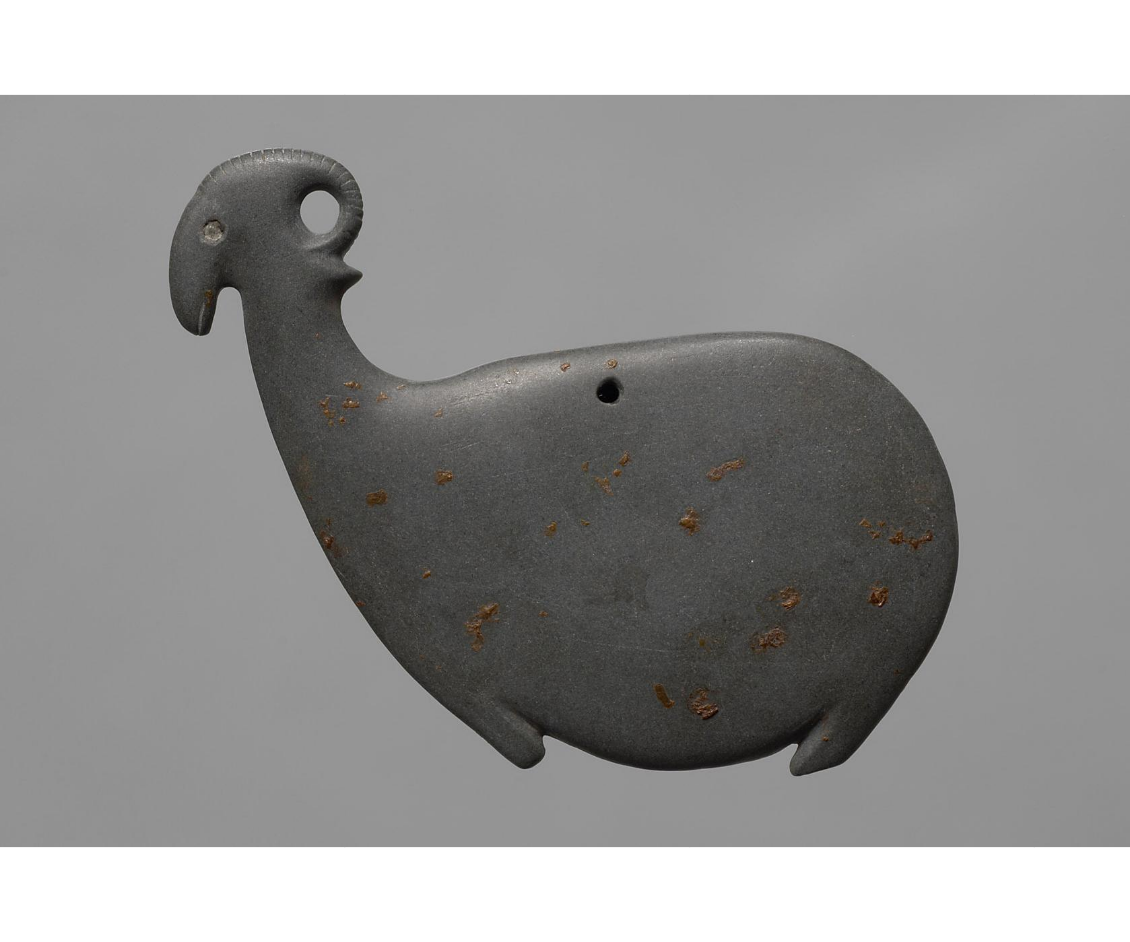Palette – zoomorphic, Barbary sheep PAL-0003
By Droux, Xavier
, Archaeological context unknown. 2005 : Purchased by the Kunsthistorisches Museum.Vienna, Kunsthistorisches Museum, AE INV 10242.
Date : Naqada I–IIB
General date of type pal_bov_1a, see Droux (2019).
Material : Greywacke
Preservation : Intact
Preservation information :
The side of the palette visible in the display case shows no evidence of the depression for eye having ever contained an inlay.
Description
The palette has a mostly ovoid shape with added stylised zoomorphic details. The animal is shown standing, with its head raised high above the level of the back. A small hole is drilled through the back, likely for attaching a string or thong.
Decoration
The head, well detailed and delicately carved, can be recognised as that of a Barbary sheep. It has strongly curved horns with bosses carved on the edge; a longitudinal, shallow groove lightly separates the right and left horns from one another. A large, circular hole drilled through the object gives the impression that the horns project away from the back of the head. The eyes are indicated by a small depression, drilled on the surface, presumably on both sides, but not through the object. Below the horns, a triangular ear is carved out. The muzzle bends downward and a small incision marks the mouth. The neck is rather long and a slight hump is indicated where it joins the back. The legs, heavily stylised, are represented by two small, non-naturalistic projections under the body.
Dimensions (cm)
9.9
12.2
Additional information
pal_bov_1a
Comments
Palettes of shape-type pal_bov_1 are all carved in the shape of the Barbary sheep; sub-type 1a pre-dates sub-type 1b; see Droux (2019). The authenticity of this artefact is questionable. It may be a modern copy of PAL-0002. The treatment of the eyes appears unusual. However, the presence of the longitudinal groove that separates the horns from one another may on the contrary suggest authenticiy, since this detail has not usually been highlighted. It is unfortunate that the modern history of the piece is unknown before 2005, at least insofar as it has been published.






